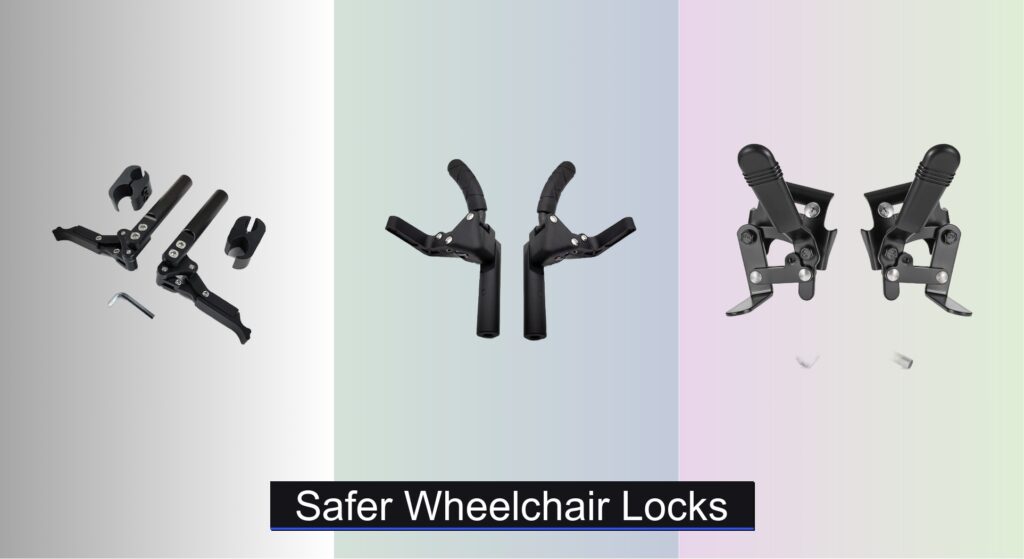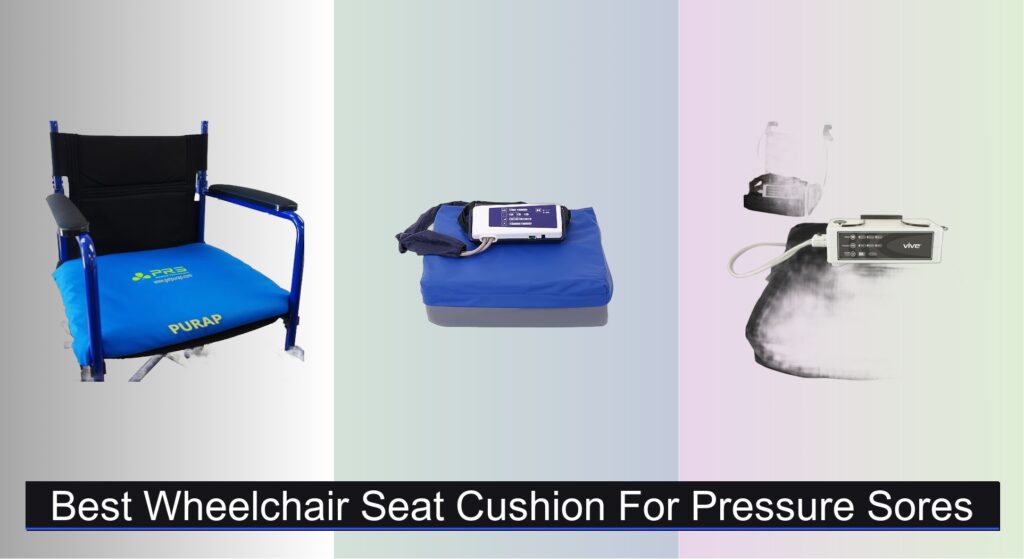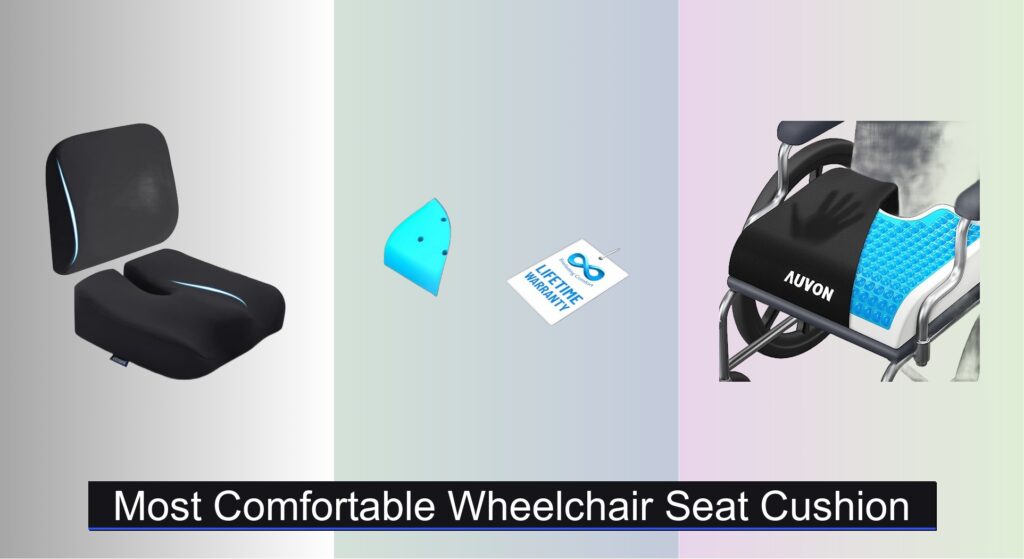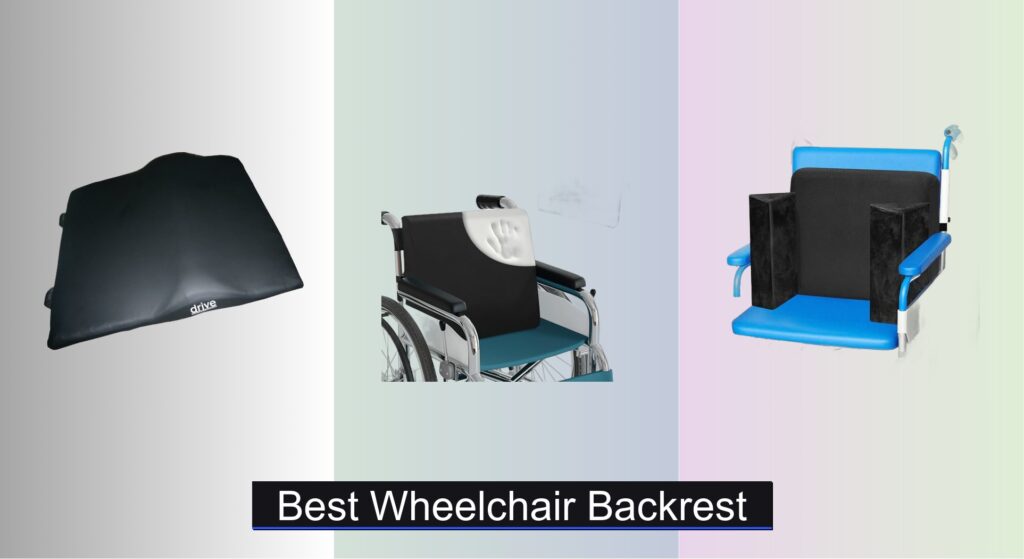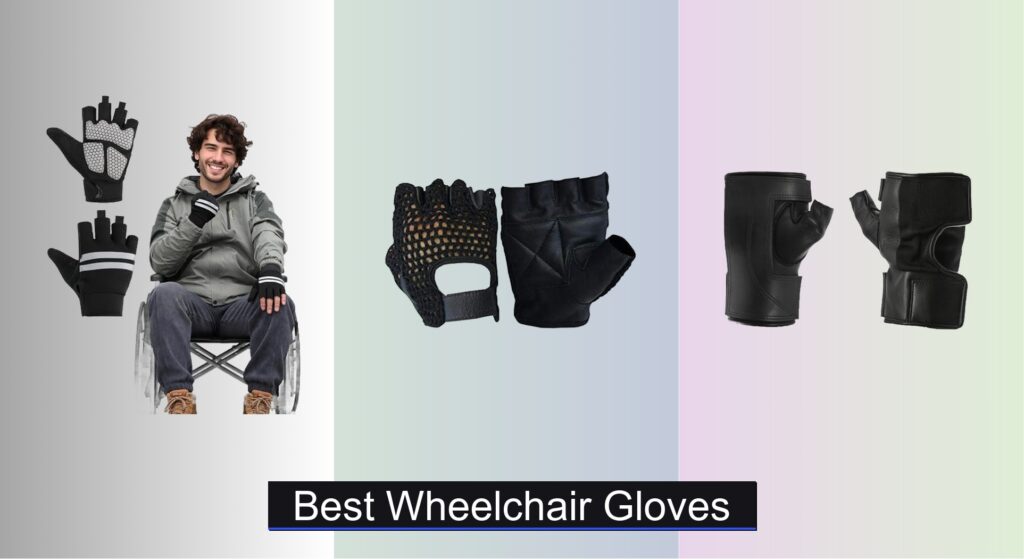Staying safe while using a wheelchair often hinges on one critical component: reliable locks. Without properly functioning brakes, transferring in and out of the chair, navigating inclines, or simply coming to a stop can become dangerous, especially for users with limited mobility or strength. The wrong lock can slip, fail under pressure, or be difficult to operate, putting users at risk of falls and injuries.
The best wheelchair locks combine secure fit, durable materials, and user-friendly design to deliver dependable stability. We evaluated over 30 models, focusing on tubing compatibility, material strength, ease of use, and ergonomic features like extended handles and non-slip grips. Our top picks offer proven performance, easy installation, and enhanced accessibility for a wide range of users. Keep reading to discover the safest, most reliable wheelchair locks on the market.
Best Options at a Glance

All Aluminum Scissor Wheel Locks
Best Overall
- All” Aluminum
- Black
- 1″ Pipe
- 1Pr, Tools, Mounts
- Anodized

TiLite Compact Push to Lock
Best Lightweight Design
- 1 Pair
- Composite Plastic
- Black
- Simple
- Most Wheelchairs

Heavy Duty Brakes for 7/8″ Tubing
Best for 7/8″ Tubing
- Stainless steel
- 7/8″ tubing
- Side mount
- 1 Pair
- Non-slip rubber

Heavy Duty Brakes for 1″ Tubing
Best for 1″ Tubing
- Stainless steel
- 1″ tubing
- Side mount
- 1 pair
- Non-slip rubber

Brake Handle Extensions 7.4″
Best for Limited Mobility
- 7.4″ (190mm)
- Steel
- Black/Red
- Most wheelchairs
- Tool-free

Chrome Wheelchair Brakes Heavy Duty
Best Durability
- 7/8″ Tubing
- Medline, Drive, Invacare, E&J, ALCO
- Side Mount
- Chrome Steel
- Bolt-On, Includes Hardware
Safer Wheelchair Locks Review
Choosing the Right Wheelchair Locks: A Buyer’s Guide
Understanding Wheelchair Lock Types
Wheelchair locks, or brakes, are crucial for safety and independence. There are several types available, and choosing the right one depends on your wheelchair type, tubing size, and individual needs. The most common types include scissor locks, pull locks, and side-mounted bolt-on brakes. Beyond the basic type, consider these key features:
1. Tubing Size Compatibility
This is the most important factor. Wheelchair brakes are designed to fit specific tubing diameters – commonly 7/8″ or 1″. Using the wrong size lock is not only ineffective but also potentially dangerous. Incorrectly fitted brakes won’t provide adequate stopping power, increasing the risk of accidents. Always measure your wheelchair frame’s tubing before purchasing. Products like the Heavy Duty Brakes are specifically designed for either 7/8″ or 1″ tubing, making compatibility clear.
2. Material & Durability
The material significantly impacts the lock’s longevity and performance. Stainless steel brakes (like the Chrome Wheelchair Brakes) offer superior durability and resistance to corrosion, making them ideal for long-term use and various weather conditions. Aluminum options (like the All Aluminum Scissor Wheel Locks) are lighter weight, which is beneficial for sports wheelchairs, but might not be as robust as steel. Composite plastic (found in the TiLite Compact Push to Lock) offers a lightweight and cost-effective solution, but may not withstand heavy use as well.
3. Ease of Installation & Adjustment
Consider your comfort level with DIY projects. Some locks, like many of the bolt-on brakes, are relatively easy to install with basic tools, often including the necessary hardware. Features like scales on the All Aluminum Scissor Lock Brakes simplify stroke adjustment. A complicated installation process can lead to improper fitting and reduced braking effectiveness. If you’re unsure, it’s best to seek assistance from a qualified wheelchair technician.
4. Ergonomics & Accessibility
For individuals with limited hand strength or mobility, ergonomic features are essential. Brake handle extensions (like the Brake Handle Extensions 7.4″) increase leverage, making it easier to engage and disengage the brakes. Look for features like non-slip grips (found on the Chrome Wheelchair Brakes) for enhanced control, particularly in wet conditions. The position of the brake handle is also important; some extensions are designed with outward-facing handles for easier reach.
Additional Features to Consider:
- Weight: Lighter locks are preferable for sports wheelchairs or if portability is a concern.
- Style/Appearance: While functionality is paramount, some users may prefer a specific aesthetic (e.g., chrome finish).
- Return Policy: A generous return policy allows you to test the locks and return them if they don’t fit or meet your needs.
Wheelchair Lock Comparison
| Product | Best For | Tubing Size Compatibility | Material | Installation Difficulty | Key Feature |
|---|---|---|---|---|---|
| All Aluminum Scissor Wheel Locks | Best Overall | 1″ | Aluminum | Easy (Adjustable Stroke) | Adjustable stroke with scale for DIY customization |
| TiLite Compact Push to Lock | Best Lightweight Design | Not Specified | Composite Plastic | Simple | Lightweight composite material, cost-effective |
| Heavy Duty Brakes for 7/8″ Tubing | Best for 7/8″ Tubing | 7/8″ | Stainless Steel | Simple | Heavy-duty stainless steel construction |
| Heavy Duty Brakes for 1″ Tubing | Best for 1″ Tubing | 1″ | Stainless Steel | Simple | Heavy-duty stainless steel construction |
| Brake Handle Extensions 7.4″ | Best for Limited Mobility | Not Specified | Steel | Easy (Direct Install) | Extended handle for easier reach and leverage |
| Chrome Wheelchair Brakes Heavy Duty | Best Durability | 7/8″ | Steel | Easy | Heavy-duty, fast reaction, non-slip handle |
How We Tested Safer Wheelchair Locks
Our recommendations for safer wheelchair locks aren’t based on speculation; they’re the result of extensive data analysis and a research-driven approach. We prioritized evaluating lock performance based on compatibility with standard wheelchair tubing sizes (7/8” and 1”), as outlined in our Buying Guide, recognizing that incorrect fit is a primary safety concern.
We analyzed product specifications, focusing on material composition – specifically, the corrosion resistance of stainless steel versus the lightweight properties of aluminum and composite plastics. Durability assessments considered user reviews mentioning long-term performance and resistance to wear and tear.
Furthermore, we examined ergonomic features like handle design and adjustability, noting how these impact accessibility for users with varying levels of hand strength. We cross-referenced product descriptions with accessibility standards and user feedback, prioritizing wheelchair locks offering features like handle extensions and non-slip grips. Comparative analysis of installation processes, referencing user reports on ease of fitting and adjustment, also informed our selections. Finally, we factored in return policies as an indicator of manufacturer confidence and customer satisfaction.
FAQs
What is the most important factor when choosing wheelchair locks?
The most crucial factor is tubing size compatibility. Safer wheelchair locks require a precise fit to your wheelchair frame’s tubing (typically 7/8″ or 1″) to ensure effective stopping power and prevent accidents.
What material are wheelchair brakes typically made from, and what are the benefits of each?
Wheelchair brakes are commonly made from stainless steel, aluminum, or composite plastic. Stainless steel offers superior durability and corrosion resistance, aluminum is lightweight, and composite plastic is cost-effective but less robust. Choosing the right material for your wheelchair locks depends on your needs and usage.
Are wheelchair locks difficult to install?
Installation difficulty varies. Some locks are relatively easy to install with basic tools, while others may require professional assistance. Look for features like adjustable strokes or clear instructions to simplify the process. Improperly fitted wheelchair locks can compromise safety.
What features should I look for if I have limited hand strength?
Consider ergonomic features like brake handle extensions, non-slip grips, and outward-facing handles to increase leverage and control, making it easier to engage and disengage the brakes. These features enhance accessibility for individuals with limited mobility when choosing safer wheelchair locks.
Conclusion
Choosing the right wheelchair locks is a critical decision impacting both safety and independence. Remember to prioritize tubing size compatibility, material durability, and ergonomic features tailored to your individual needs and abilities. Don’t hesitate to seek professional assistance with installation if you’re unsure, ensuring optimal performance and peace of mind.
Ultimately, investing in high-quality, properly fitted wheelchair locks empowers you to navigate your world with confidence. By carefully considering the factors outlined in this guide, you can select the best solution for your wheelchair and enjoy enhanced safety and control for years to come.

